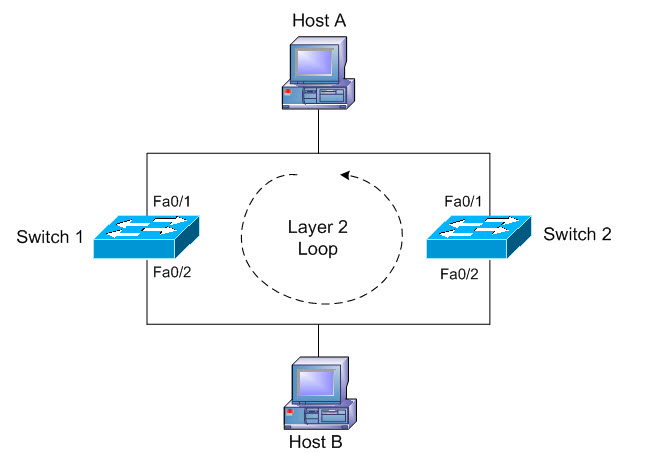
The looping of frames over a LAN can be prevented using the spanning tree protocol, which does this by placing the ports of the switch in different states according to many parameters, such as the selection of the root switch, the switch’s root cost, and so on.
Table of Contents
Blocking State:
- The blocking state is entered by a switch port during the election process, whenever a switch gets a BPDU on a port that indicates a better path to the Root Switch, or whenever a port is determined to not be a Root Port.
- The frames that are received from attached network segments or moved from another port to another port for forwarding are discarded by the port.
- The BPDUs are then sent to the switch system module for processing after the port has finished receiving them.
- The port is responsible for receiving management messages from the network and responding to them.
- After a period of 20 seconds in which it is in the blocking state, the switch port transitions into the listening state.
Listening State
- The first transitional state that occurs after the blocking state is called the listening state.
- During this state, STP decides whether or not the port should participate in frame forwarding by analysing the packets that pass through it.
- Frames that are received from an associated network segment or switched from another port are discarded when the port is used.
- The BPDUs are then sent to the switch system module for processing after the port has finished receiving them. Additionally, it is responsible for processing BPDUs that have been received from the switch system module.
- The port is responsible for receiving management messages from the network and responding to them.
- After a fifteen-second interval in which it is in the listening state, the switch port transitions into the learning state.
Learning State
- Following the completion of the listening state and in accordance with the decision made by STP, the switch port transitions into the learning state.
- When a frame is received from an associated network segment or switched from another port for forwarding, the port will discard the frame and go on.
- The MAC address database that Port uses includes information about the locations of hosts on local area networks.
- The Port is responsible for BPDU reception, processing, and transmission after receiving them from the system module.
- The port is responsible for receiving management messages from the network and responding to them.
- After a period of 15 seconds spent in the learning state, the switch port will transition to the forwarding state.
Forwarding State
- After going through all of the states that are necessary for the formation of the network architecture, a switch port will eventually enter the forwarding state.
- The frames that are sent to a port from an associated network segment or switched from another port are forwarded by that port.
- The port is responsible for traffic forwarding.
- The MAC address database is updated using the LAN host location information that is provided by Port.
- The Port is responsible for BPDU reception, processing, and transmission after receiving them from the system module.
- The port is responsible for receiving management messages from the network and responding to them.
- The state of the switch port will always be forwarded until any change in the network is discovered.
Disabled State
- Following the execution of an administrative command to deactivate the port, the switch port transitions into the disabled state.
- Due to the fact that it is regarded as non-operational, the port does not take part in any of the STP’s operations.
- The BPDUs that have been received are not sent on to be processed by the switch system module by the port.
- The port is responsible for receiving management messages from the network and responding to them.
Originally posted 2022-09-15 23:38:26.
Hello, I am a professional writer and blogger at Adclays.com. I love to explore the latest topics and write on those topics. I spend the maximum of my time on reading and writing interesting topics which provide valuable piece of information to my readers whether it comes to the latest fashion, technology, healthy lifestyle, business information, etc. Explore my writings by visiting the website.